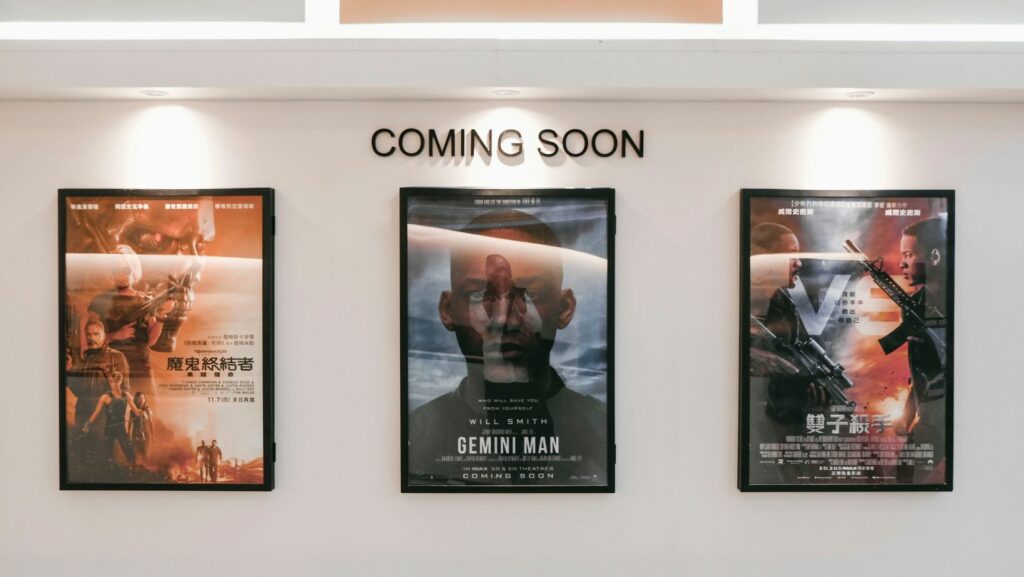Movie Adaptations of Books
Movie adaptations of books remain popular because they offer visual storytelling that can enhance the reader’s imagination. Seeing beloved characters come to life on screen adds a new dimension to familiar tales. Adaptations introduce literary works to a broader audience that might prefer visual media over reading.
Adapting books into movies bridges the gap between literature and film, creating a shared cultural experience. For instance, blockbuster adaptations like “Harry Potter” and “The Lord of the Rings” have generated immense global fandoms. Popular adaptations contribute significantly to cultural conversations. These movies often promote increased book sales and renewed interest in the original literary works. Adaptations like “The Great Gatsby” saw a surge in book sales following each film version.
Filmmakers often see adaptations as opportunities for creative interpretation. Directors and screenwriters might explore subplots, background stories, or thematic elements differently than the original author. For instance, the “Shining” adaptation by Stanley Kubrick offers a different take on Stephen King’s novel. Modern technology allows movies to depict fantastical elements with high realism. Special effects can make imaginary worlds more believable, adding to the allure of adaptations. Films like “Avatar” and “The Chronicles of Narnia” showcase how advanced technology can bring intricate details of books to life. Adaptations often connect different generations through shared stories. Grandparents and children can enjoy the same story, albeit in different formats. This shared experience fosters intergenerational dialogue and mutual appreciation for both the book and its film version.
Iconic Examples Of Movie Adaptations
Movie adaptations of books often become iconic cultural milestones, blending storytelling from both mediums. Classic and modern adaptations demonstrate the timeless appeal and evolving techniques in filmmaking.
Several classic adaptations have left a lasting impact.
- Gone with the Wind (1939): Adapted from Margaret Mitchell’s novel, this film remains one of the most celebrated in cinema history. It’s famous for its grandeur and historical accuracy.
- To Kill a Mockingbird (1962): This adaptation of Harper Lee’s acclaimed book is praised for its faithful depiction of the novel’s themes of racial injustice and morality.
- The Godfather (1972): Based on Mario Puzo’s novel, this film is renowned for its masterful storytelling and has become a staple in discussions about best film adaptations.

Modern adaptations leverage advanced technology and contemporary storytelling techniques.
- Harry Potter Series (2001-2011): J.K. Rowling’s books were successfully turned into a globally beloved film series, using special effects to bring the magical world to life.
- The Lord of the Rings Trilogy (2001-2003): Peter Jackson’s adaptation of J.R.R. Tolkien’s epic fantasy series set new standards for the genre, blending stunning visuals with a faithful retelling.
- The Hunger Games Series (2012-2015): Based on Suzanne Collins’ novels, these films captivated audiences with their dystopian setting and strong character development.
These examples emphasize how book-to-film adaptations continue to resonate across different eras, adapting to both the times and technological capabilities.
Challenges Faced In Adapting Books To Movies
Adapting books into movies involves numerous challenges. Filmmakers encounter multiple obstacles while striving to translate the written word into a visual medium. Books often contain intricate subplots, detailed backstories, and expansive world-building. Crop complex narratives into a two-hour runtime proves challenging due to these elements. In some cases, important storylines might be omitted. For example, Tom Bombadil’s exclusion from Peter Jackson’s “The Lord of the Rings” trilogy trimmed the narrative without sacrificing the main themes.
Preserve character integrity demands careful attention. Authors often spend years crafting characters with depth and nuance. Condense character development into a limited duration can dilute these complexities. Harry Potter’s portrayal in films succeeded largely due to staying true to his book persona, ensuring that fans of the books felt a connection to the on-screen character. Conversely, some adaptations face criticism for altering characters, like the change in Faramir’s motivations in “The Two Towers,” which sparked debate among fans.
Movie adaptations of books remain a captivating intersection of literature and film, offering audiences fresh perspectives on beloved stories. They bridge the gap between different mediums, creating shared cultural experiences and often revitalizing interest in the original works. While challenges in adaptation persist, the evolution of technology and storytelling techniques continues to enhance the allure of these films. As filmmakers strive to balance fidelity to source material with cinematic innovation, adaptations will undoubtedly continue to captivate and inspire audiences for generations to come.

